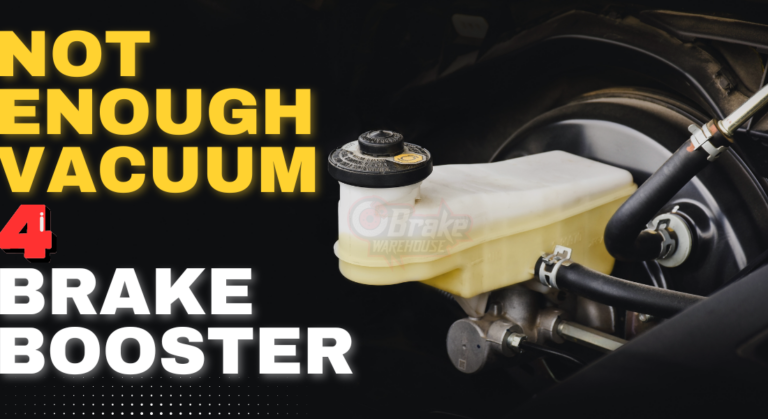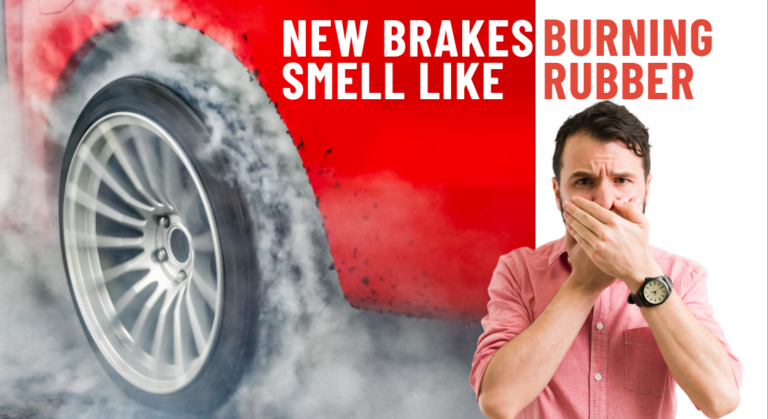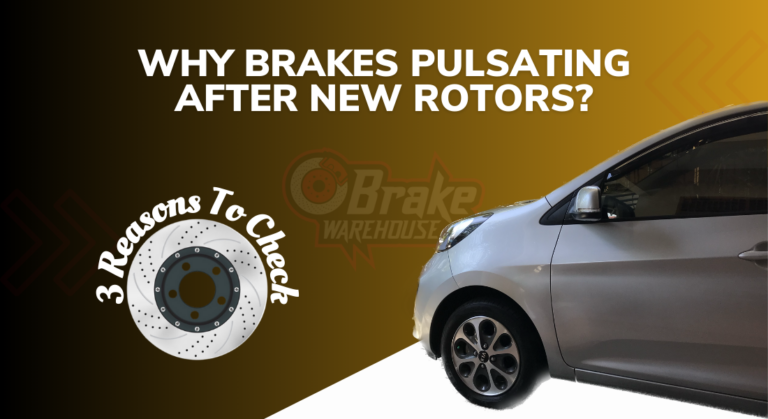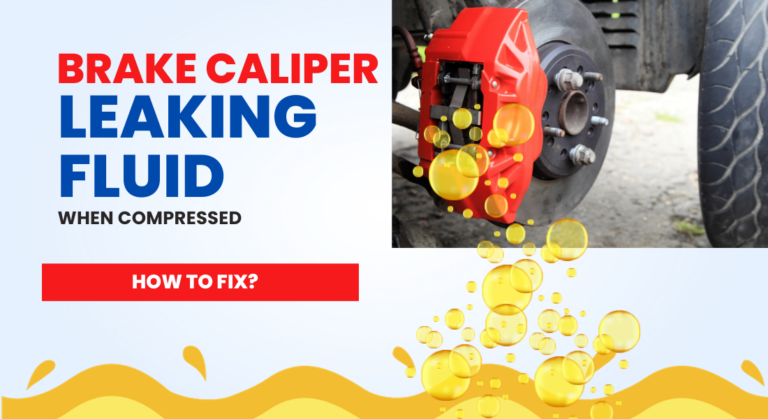Brake Pedal Goes to Floor After New Master Cylinder – Why?
The master cylinder plays a crucial role in the braking system by converting the brake pedal’s force into hydraulic pressure. This force is transferred through the brake lines to the brake pads, causing them to contact the brake rotors, ultimately slowing down the vehicle.
However, after driving approximately 60,000 miles, the master cylinder may wear out and develop problems, including leakage. As a result, the brake pedal may feel spongy and require more effort to stop the vehicle. Fortunately, replacing the master cylinder can restore the brake pedal’s normal stiffness.
However, sometimes, the brake pedal becomes loose after the replacement, signifying a problem during or after the replacement. This article discusses these possible causes and provides solutions to each. Therefore, read on.
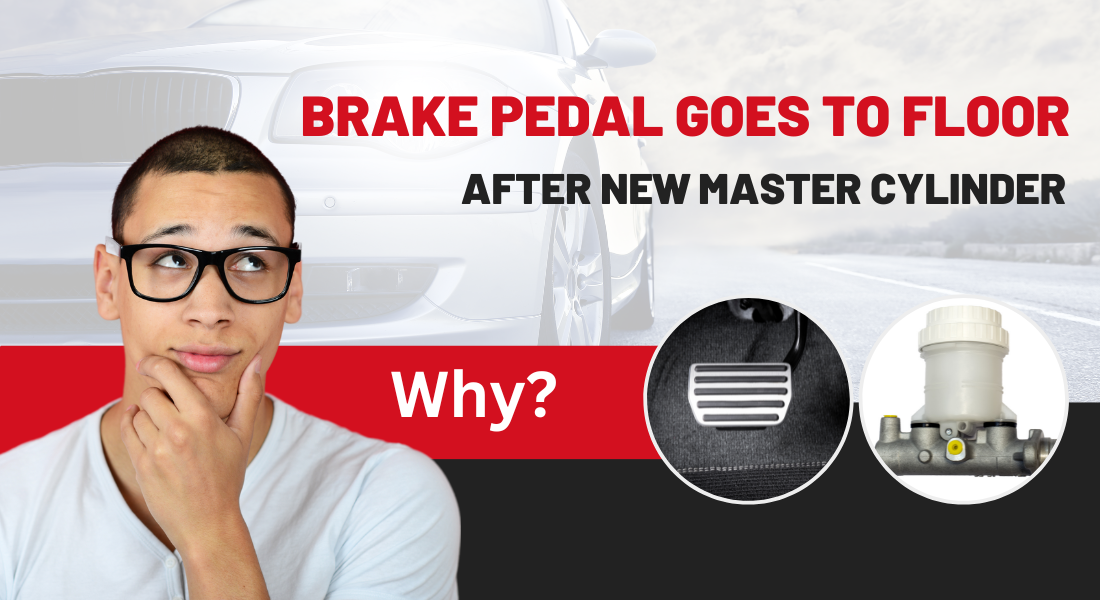
Possible Reasons Brake Pedal Goes to Floor After New Master Cylinder
Usually, when the brake pedal goes to the floor, there is an issue with the vehicle’s brake fluid. In this case, where you recently replaced the master cylinder, the problem is due to the replacement.
- Firstly, the new master cylinder may be installed incorrectly, allowing brake fluid to leak.
- Also, the new master cylinder may be unable to generate enough pressure due to air in the brake system.
Firstly, the new master cylinder may be installed incorrectly, allowing brake fluid to leak. Also, the new master cylinder may be unable to generate enough pressure due to air in the brake system.
However, you need to perform further diagnostic tests on your vehicle to determine the exact component causing problems. You can hire a professional to diagnose the problem, or you can do it by following the steps discussed under each possible cause.
Following are the possible reasons the brake pedal may become unresponsive after installing a new master cylinder.
1. Air in The Braking System
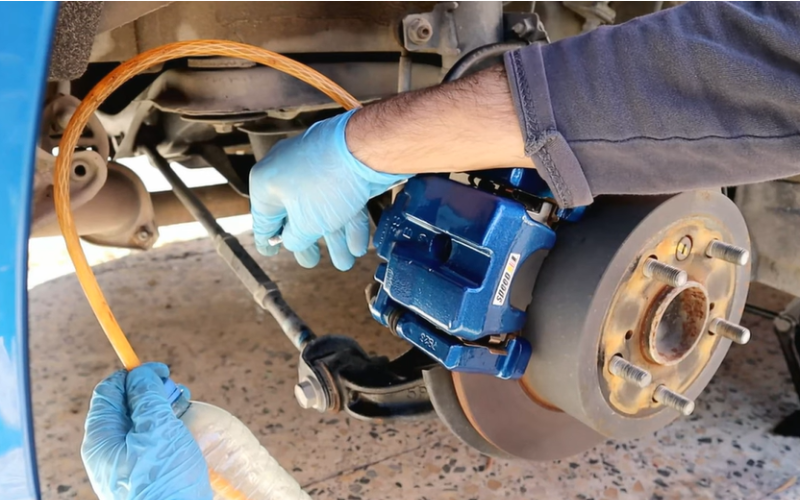
The braking system works by compressing the brake fluid flowing within it. Air in the system can cause inconsistencies in braking since the two matters have different compressibility.
Liquids are harder to compress than gas, and when the two are in the braking system, you’ll have to depress the pedal down further. The air might have gotten into the braking system while you were replacing the master cylinder.
Usually, their air seeps into the system when disconnecting the hydraulic lines from the old master cylinder.
Usually, the air seeps into the system when disconnecting the hydraulic lines from the old master cylinder.
Solutions
The solution to air in the braking system is to remove it through bleeding. The cost of bleeding brakes starts $80 to $140 depending on the shop and the type of vehicle.
This video shows how to bleed braking system
2. The Master Cylinder Is Installed Improperly
The master cylinder may also be improperly installed, especially if you did it yourself. Most likely, the master cylinder is not properly fitted to the brake booster or the lines to the wheels.

Brake fluid may be lost through leaks if the master cylinder isn’t properly connected to any attached parts.
Also, an improper connection between the two can result in reduced braking power, especially if the pushrod is not at the correct length. The brake pedal becomes spongy and, in this case, goes to the floor when you depress it.
Solutions
To fix an improperly installed master cylinder, you should reinstall it properly. This time, ensure all the hoses and connections are installed correctly to avoid leaks.
Hire a professional to reinstall the master cylinder and bleed the braking system. The installation cost is between $200 and $300.
The following video shows how to install the master cylinder
3. There’s a Leak in the System
A leak in the braking system can cause the brake pedal to go to the floor when you depress it. Leaks reduce the brake fluid in the braking system, requiring much more force to build pressure in the master cylinder.
The brake fluid can leak from various components attached to the master cylinder, including the brake fluid lines. The seal between the master cylinder and the brake booster push rod may also be improperly installed or worn, allowing a vacuum leak.
Pinpointing the leaking point in the braking system will need further diagnostics, especially by a professional.
Solution
Replace the seal between the brake booster and the master cylinder if it is the source of the leak. For a price between $60 and $150, you can hire a mechanic to replace the master cylinder seal. A single seal usually cost less than $5 and a seal kit around $40.
Read Also: Why Does Brake Pedal Goes to Floor after Bleeding?(4 Causes)
4. The New Master Cylinder is Faulty

The newly installed master cylinder may be faulty and can’t generate enough pressure. In this case, it may be the reason why the brake pedal descends to the floor when you press it.
The master cylinder can be faulty due to manufacturing defects or damage while being shipped or handled. However, the cap seals in the master cylinder may be faulty, allowing internal leaks, especially if it is a second-hand part.
Solutions
In this case, the master cylinder needs to be checked by a professional to determine whether it’s still usable. You’ll need to buy a new master cylinder if the current one is deemed unusable Replacing faulty seals in the master cylinder can cost between $150 and $230.
Read Also: Bad Master Cylinder or Air in Brake Lines? Find The Culprit
Conclusion
Ensuring the safety of a vehicle’s passengers depends on the proper functioning of the brake system. If the brake pedal sinks to the floor while braking after installing a new master cylinder, it may indicate a defective or incorrectly installed component.
However, it is important to conduct a thorough diagnostic examination of both the braking system and master cylinder to identify the problem’s cause. This article outlines some of the common reasons behind this problem and provides step-by-step instructions on how to resolve each issue.
Read Also: No Brake Pressure after Bleeding – Why & How To Fix It?

Meet Zayan, the mechanical genius behind the highly acclaimed brakes problems and solutions website. With over a decade of hands-on experience in the automotive industry, Zayan has become a trusted authority in the realm of brake systems.
His passion for cars, coupled with his expertise in solving complex brake-related issues, has earned him a devoted following of car enthusiasts, mechanics, and everyday drivers seeking reliable guidance.


